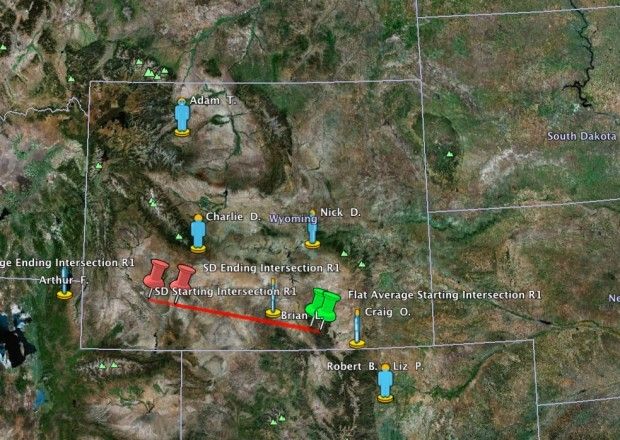A fireball streaking across Britain left stargazers stunned last night. The green-tinged meteor shot over England and Wales in a northerly direction at around 9.45pm. Experts believe the meteor might have formed from debris from Halley's Comet. Many observers took to Twitter to report the phenomenon with sightings apparently recorded in Cornwall, Hampshire, Lancashire, South Wales and Worcestershire.
Suzy Buttress, of Basingstoke in Hampshire, said she spotted the celestial body while driving along the M3.
She wrote on Twitter: "I have just seen the biggest meteor in my life! It was also noticeably green, and appeared very large compared to regular meteors I've seen."
Louise Darnell also reported the unusual event on the social networking site.
She wrote: "Seen the brightest and lowest shooting star ever! It was definitely a UFO..??"
Reports suggested the meteor crossed Britain from the South East towards the North West.
Space scientist Maggie Aderin-Pocock said the meteor's size was unusual.
She said: "It seems that this one was particularly large and particularly bright, which is why it's caught so much attention."
"It's quite likely to be part of the Eta Aquarids, which is the debris left by Halley's Comet. And twice a year we pass through the debris left behind by the comet and when this happens we see more of these shooting stars, but there must have been a large lump left behind which is what caused such a bright meteor to be seen."

Comment: And there was an earthquake around the same time/area: Earthquake Magnitude 4.2 - 28km W of Soda Springs, Idaho. Interestingly, the technical data from USGS shows a Depth of +/- 11.3km with an uncertainty of =/- 10.9km...
Also, do not confuse the fact that more fireballs events are taking place with the fact that more people are becoming aware of them. It's not that more fireballs are being observed due to more people looking out for them; more fireballs are being observed because more fireball events are happening!